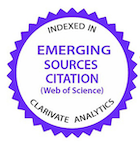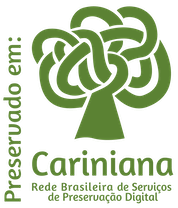Atributos produtivos e nutricionais da forragem hidropônica de milho, em diferentes estágios, cultivada em substratos de capim-elefante e serragem de madeira
DOI:
https://doi.org/10.1590/1809-6891v25e-78582EResumo
O objetivo foi avaliar atributos produtivos e nutricionais da forragem hidropônica de milho, em diferentes estágios, cultivada em substratos de capim-elefante e serragem de madeira. Foram estabelecidos dois tratamentos (T), com diferentes substratos: T1 – capim-elefante picado e desidratado e T2 – serragem de madeira. No 13º e 20º dias após a semeadura, amostras da forragem foram coletadas para avaliação do desenvolvimento das plântulas, produção de biomassa e composição nutricional. O substrato capim-elefante promoveu melhor desenvolvimento das plântulas, maior produção de biomassa e concentração de matéria mineral, aos 13 dias, quando a serragem de madeira promoveu maior concentração de matéria seca, proteína bruta, lignina e carboidrato não fibrosos (P<0,05). O substrato capim-elefante resultou em maior altura de plântula, produção de biomassa verde, concentração de matéria mineral, proteína bruta e extrato etéreo, aos 20 dias, quando a serragem de madeira promoveu maior comprimento de raíz, maior concentração de matéria seca, fibra em detergente ácido e lignina (P<0,05). O substrato capim-elefante e a coleta aos 13 dias promoveram melhor resultado para a produção de forragem hidropônica, bem como para a sua composição nutricional.
Downloads
Referências
Viquez CR, Bravo FS. Efecto de la nutrición mineral sobre la producción de forraje verde hidropónico de maíz. Agronomía Costarricense. 2017;41:1-14. http://dx.doi.org/10.15517/rac.v41i2.31301
Santana DC, Arevaldo ACM, Silva PR, Kraeski MJ, Ribera LM, Torres FE. Forragem hidropônica no ecótono cerrado pantanal. Research, Society and Development. 2021;10:1-10. https://doi.org/10.33448/rsd-v10i6.15909
Campêlo JEG, Oliveira JCG, Rocha AS, Carvalho JF, Moura GC, Oliveira ME, Silva JAL, Moura JWL, Costa VM, Uchoa LM. Forragem de milho hidropônico produzida com diferentes substratos. Revista Brasileira de Zootecnia. 2007;36:276-281. https://doi.org/10.1590/S1516-35982007000200002
Holanda JMFDA, Lazarini E, Sanches IR. Produção de matéria seca e composição bromatológica de milho e soja hidropônicos em palha de arroz e N em cobertura. Research, Society and Development. 2021;10:226310615765. http://dx.doi.org/10.33448/rsd-v10i6.15765
Santos ESC, Almeida RAL, Cruz TB, Cerqueira JC, Silva RC, Andrade Sobrinho LEC, Silva HS, Santos CD, Barbosa LP, Santana ALA. Creole corn seed promotes increase in production and nutritional aspects in hydroponic forage. Revista Brasileira de Saúde e Produção Animal. 2023;24:1-10, e20232021. https://doi.org/10.1590/S1519-994020232021
Müller L, Santos AS, Manfron PA, Medeiros SLP, Haut V, Dourado Neto D, Menezes NL, Garcia DC. Forragem hidropônica de milheto: produção e qualidade nutricional em diferentes densidades de semeadura e idades de colheita. Ciência Rural. 2006;36:1094-1099. https://doi.org/10.1590/S0103-84782006000400008
FAO. Oficina Regional para America Latina y el Caribe. Forraje verde hidropônico: manual técnico. Santiago, 2001. 79 p.
Almeida JCS, Valentim JK, Faria DJG, Noronha CMS, Velarde JMDS, Mendes JP, Pietramale RTR, Ziemniczak HM. Bromatological composition and dry matter production of corn hydroponic fodder. Acta Scientiarum. Animal Sciences. 2021;43:1-8. https://doi.org/10.4025/actascianimsci.v43i1.48800
Fonseca GC, Araújo GP, Abreu NL, Pantoja RVL, Nascimento ALS, Faria LA. Quality of hydroponic forage corn cultivated on different by-product substrates. Ciência Animal Brasileira. 2021;22:1-11. https://doi.org/10.1590/1809-6891v22e-69834
Píccolo MA, Coelho FC, Gravina GA, Marciano CR, Rangel OJP. Produção de forragem verde hidropônica de milho, utilizando substratos orgânicos e água residuária de bovinos. Revista Ceres. 2013;60:544-551. https://doi.org/10.1590/S0034-737X2013000400014
Sodré GA, Corá JE, Souza Júnior JO. Caracterização física de substratos à base de serragem e recipientes para crescimento de mudas de cacaueiro. Revista Brasileira de Fruticultura. 2007;29:339-344. https://doi.org/10.1590/S0100-29452007000200029
Silva DD, Queiroz A. Análise de alimentos: métodos químicos e biológicos. 3ª ed. Viçosa: editora UFV; 2002, 235p. Português.
Capelle ER, Valadares Filho SC, Silva J FC, Cecon PR. Estimates of the energy value from chemical characteristics of the feed stuffs. Revista Brasileira de Zootecnia. 2001;6:1837-1856. https://doi.org/10.1590/S1516-35982001000700022)
Detmann E. Métodos para análise de Alimentos - INCT - Ciência Animal. 1. ed. Viçosa: editora produção independente; 2012. 214p. Português.
Ndaru PH, Huda AN, Marjuki, Prasetyo RD, Shofiatun U, Nuningtyas YF, Ndaru RK, Kusmartono. Providing high quality forages with hydroponic fodder system. Iop Conference Series: Earth and Environmental Science. 2020;478:1-7. https://doi.org/10.1088/1755-1315/478/1/012054
Shit N. Hydroponic fodder production: an alternative technology for sustainable livestock production in India. Exploratory Animal and Medical Research. 2019;9:108-119. https://doi.org/10.1590/S1519-994020232021
Naik PK, Dhuri RB, Swain BK, Singh NP. Nutrient changes with the growth of hydroponics fodder maize. Indian Journal of Animal Nutrition. 2012;29:161–163. https://www.researchgate.net/publication/258716467_Nutrient_changes_with_the_growth_of_hydroponics_fodder_maize
Murphy DJ. The biogenesis and functions of lipid bodies in animals, plants and microorganisms. Progress in Lipid Research. 2001;40:325-438. https://doi.org/10.1016/s0163-7827(01)00013-3
Manhães NE, Sant’ana JG, Coelho FC, Garcia LNC, Lombardi CT, Francelino FMA. Forragem de milho hidropônico cultivado em bagaço de cana-de-açúcar, com diferentes densidades de semeadura e concentrações de vinhoto. Cadernos de Agroecologia. 2011;6:1-5. https://revistas.aba-agroecologia.org.br/cad/article/view/11445/7250
Rocha RJ, Salviano AAC, Alves AA, Neiva JNM. Produtividade e composição química da forragem hidropônica de milho em diferentes densidades de semeadura no substrato casca de arroz. Revista Científica de Produção Animal. 2014;16:25-31. https://doi.org/10.15528/2176-4158/rcpa.v16n1p25-31
Müller L, Manfron PA, Santos OS, Medeiros SLP, Haut V, Dourado Neto D, Fagan EB, Bandeira AH. Produção e composição bromatologica da forragem hidropônica de milho, Zea mays L., com diferentes densidades de semeadura e datas de colheita. Zootecnia Tropical. 2005;23:105-119. https://ve.scielo.org/scielo.php?script=sci_arttext&pid=S0798-72692005000200002
Valadares Filho SC. CQBAL 4.0. Tabelas Brasileiras de Composição de Alimentos para Bovinos. 2020. Disponível em: www.ufv.br/cqbal
Downloads
Publicado
Como Citar
Edição
Seção
Licença
Copyright (c) 2024 Ciência Animal Brasileira / Brazilian Animal Science

Este trabalho está licenciado sob uma licença Creative Commons Attribution 4.0 International License.
Autores que publicam nesta revista concordam com os seguintes termos:
- Autores mantém os direitos autorais e concedem à revista o direito de primeira publicação, com o trabalho simultaneamente licenciado sob a Licença Creative Commons Attribution que permite o compartilhamento do trabalho com reconhecimento da autoria e publicação inicial nesta revista.
- Autores têm autorização para assumir contratos adicionais separadamente, para distribuição não-exclusiva da versão do trabalho publicada nesta revista (ex.: publicar em repositório institucional ou como capítulo de livro), com reconhecimento de autoria e publicação inicial nesta revista.
- Autores têm permissão e são estimulados a publicar e distribuir seu trabalho online (ex.: em repositórios institucionais ou na sua página pessoal) a qualquer ponto antes ou durante o processo editorial, já que isso pode gerar alterações produtivas, bem como aumentar o impacto e a citação do trabalho publicado (Veja O Efeito do Acesso Livre).






























